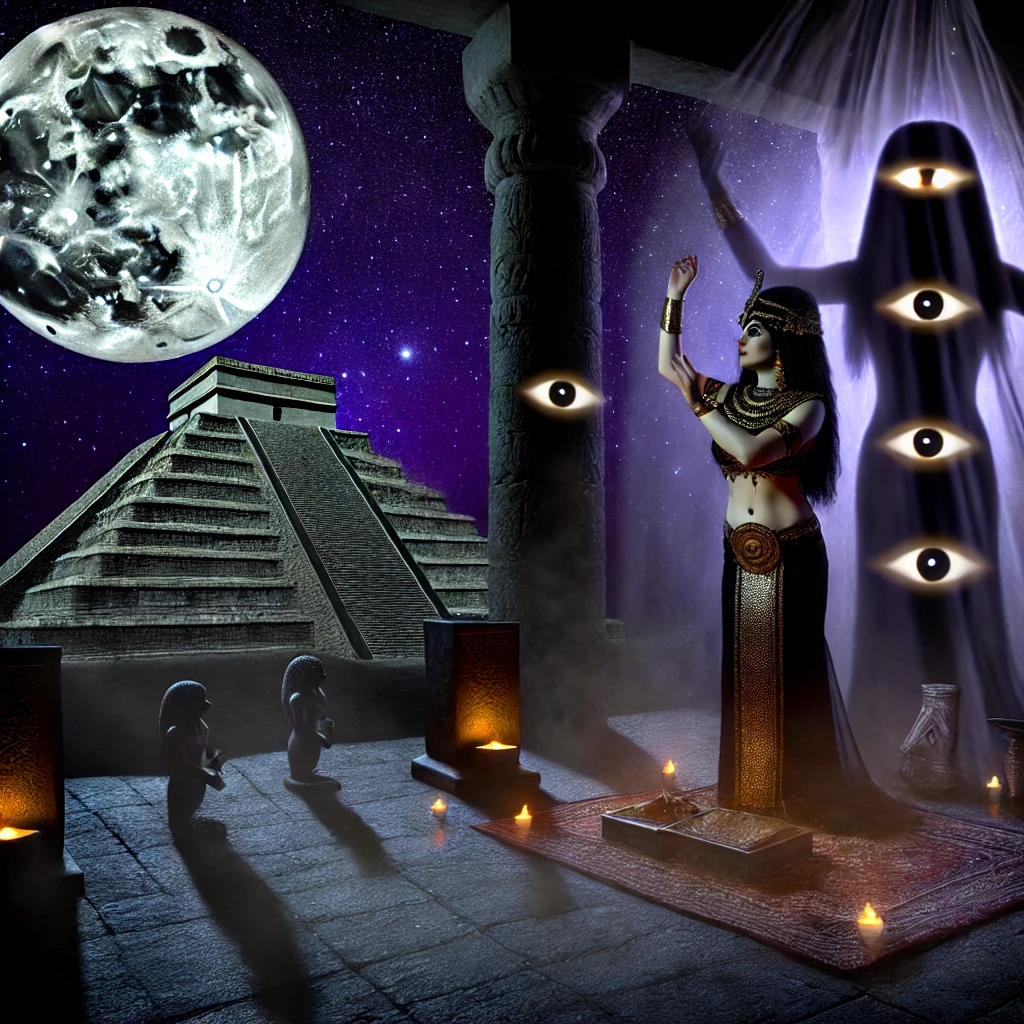In ancient Mesopotamia, the heart of the mighty Babylonian Empire, curses and omens were woven into the very fabric of life. Priests, diviners, and magicians held the delicate threads of fate in their hands, knowing that a single spoken word could alter destinies and stir ancient powers. Babylonian curseology was a realm both feared and revered, where a blessing from a god could bring abundance, but a curse could unravel lives, kingdoms, and even the gods’ favor.
Legend speaks of the high priestess Ninsianna, who served at the great ziggurat of Marduk. Known for her wisdom, she interpreted the stars, deciphered omens, and held the sacred knowledge of curses in her mind, locked away like jewels in a temple chest. Her reputation stretched from the Euphrates to the far reaches of the empire, for Ninsianna was said to wield a rare curse known only as Shamash’s Shadow, a powerful hex that could summon the god of justice to reveal hidden truths—and enact retribution upon the guilty.
One fateful evening, a desperate family from a nearby village came to the ziggurat seeking her help. Their son had been accused of stealing grain from the temple storehouse, a crime punishable by death. Although the family swore on their ancestors that the boy was innocent, no one believed them. They pleaded with Ninsianna, offering her their last few silver coins, begging for her intervention.
Moved by their anguish, Ninsianna agreed to perform the Shamash’s Shadow. That night, beneath the eerie light of the waxing moon, she conducted the ritual in the inner sanctum, calling upon Shamash to shine his divine light on the truth. As she chanted, shadows around her flickered, growing darker, denser, and coalescing into a single looming figure with eyes like the fire of stars.
When Ninsianna finished her incantation, the figure spoke. It was indeed Shamash, revealing the truth: the boy was innocent, and the temple’s scribe, jealous of his popularity, had planted the grain in his home. Shamash’s words, dripping like honey from the shadows, were both salvation and condemnation. When Ninsianna revealed the truth, the temple authorities condemned the scribe, and the boy’s life was spared.
Yet as Ninsianna watched the scribe dragged away, she felt a cold wind brush her spine. For the curse of Shamash’s Shadow demanded balance. By calling the god’s attention to the mortal realm, she had unsettled forces not meant to be stirred. In the coming days, the temple’s crops began to fail, blights appeared on livestock, and strange sickness spread among the people. It was said that Shamash, disturbed from his celestial realm, had marked Babylon, his touch leaving a shadow on the land itself.
Desperate to cleanse the curse, Ninsianna attempted ritual after ritual, praying to Shamash to withdraw his shadow. Her final act was to sacrifice her own future—the life of a high priestess and the chance to serve in the great ziggurat was given in exchange for Babylon’s safety. The curse lifted, and prosperity returned, but Ninsianna’s name was erased from temple records, a silent testament to her sacrifice.
From then on, the Babylonians feared invoking curses too close to the gods, for the tale of Shamash’s Shadow became a legend in its own right. Curses were no longer tools of wrath but reminders of humility, warning that the power to alter fate was not a gift but a burden, and the divine shadows in Babylon would not be disturbed lightly.
